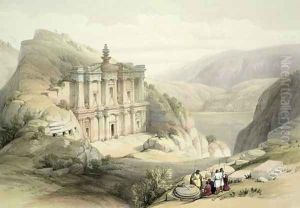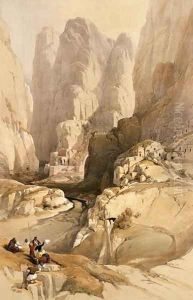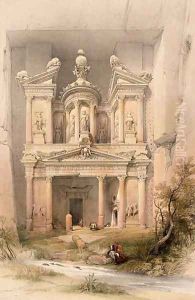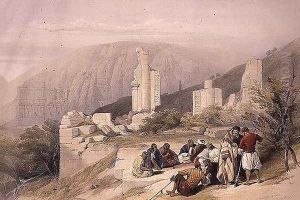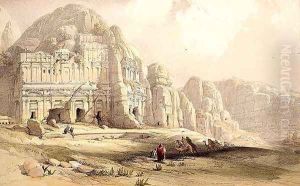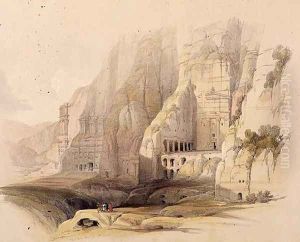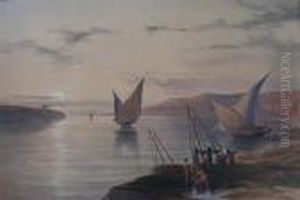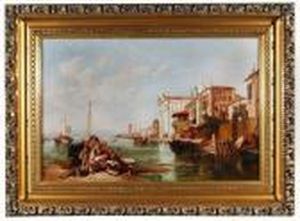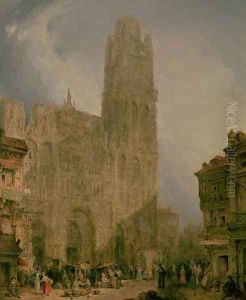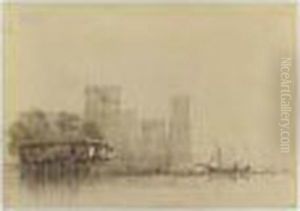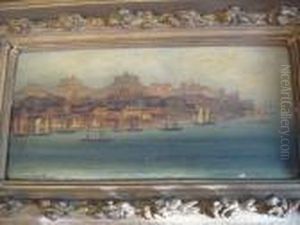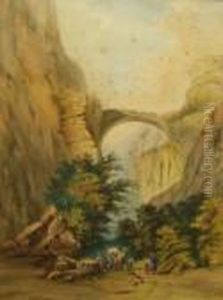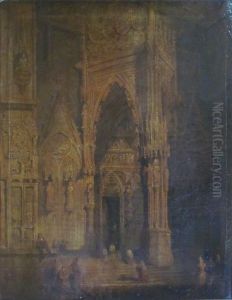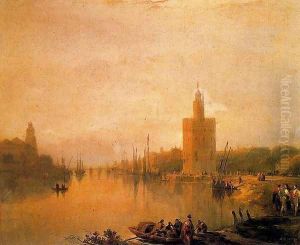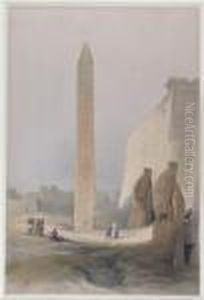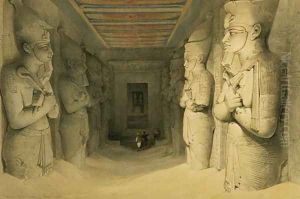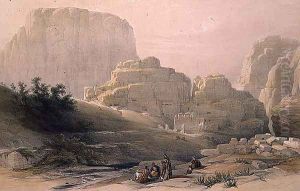





Lower End of the Valley showing the Acropolis, Petra, March 9th 1839, plate 102 from Volume III of The Holy Land, engraved by Louis Haghe 1806-85 pub. 1849
-
About Reproduction
Discover the allure of art with our faithful reproduction of "Lower End of the Valley showing the Acropolis, Petra, March 9th 1839, plate 102 from Volume III of The Holy Land, engraved by Louis Haghe 1806-85 pub. 1849", originally brought to life by the talented David Roberts. Unlike posters or prints, our hand-painted oil painting breathes an unique sense of depth and texture into your space. Every detail, every stroke, and every texture is meticulously recreated, paying the perfect homage to David Roberts and his artistic vision.
Owning this piece is more than just decoration - it's a statement of your refined taste in art. Let the vibrant colors and intricate details of this replica serve as a daily reminder of the beauty in our world. Elevate your decor and appreciate the richness of art with our replica of this masterpiece.
-
Painting Description
"Lower End of the Valley showing the Acropolis, Petra, March 9th 1839, plate 102 from Volume III of The Holy Land" is a notable work engraved by Louis Haghe (1806-1885) and published in 1849 by David Roberts. This piece is part of a larger collection that captures the essence of the Middle East during the 19th century, a period marked by increasing European interest in the region's historical and cultural heritage.
David Roberts, a Scottish painter, embarked on a journey to the Middle East in 1838, traveling through Egypt, the Sinai Peninsula, and the Levant. His travels culminated in a series of detailed sketches and paintings that were later transformed into lithographs by the Belgian engraver Louis Haghe. These lithographs were compiled into a six-volume work titled "The Holy Land, Syria, Idumea, Arabia, Egypt, and Nubia," which was published between 1842 and 1849. The collection is celebrated for its artistic and historical significance, providing a visual documentation of the region during a time when photography was still in its infancy.
The specific plate, "Lower End of the Valley showing the Acropolis, Petra, March 9th 1839," offers a glimpse into the ancient city of Petra, located in present-day Jordan. Petra, known for its rock-cut architecture and water conduit system, was the capital of the Nabataean Kingdom and is now a UNESCO World Heritage Site. Roberts' depiction of Petra captures the grandeur and mystery of this archaeological marvel, highlighting the intricate details of its structures and the rugged beauty of its surrounding landscape.
Louis Haghe's engraving technique is renowned for its precision and clarity, bringing Roberts' original sketches to life with remarkable fidelity. The collaboration between Roberts and Haghe resulted in a series of works that not only serve as valuable historical records but also as masterpieces of 19th-century art. The publication of these works by F.G. Moon in London further cemented their importance, making them accessible to a wider audience and contributing to the Western world's fascination with the Middle East.
"Lower End of the Valley showing the Acropolis, Petra, March 9th 1839" stands as a testament to the enduring allure of Petra and the skill of both David Roberts and Louis Haghe. It remains an important piece within the broader context of 19th-century travel art, offering insights into the cultural and historical landscapes of the time.
-
Lead Time & Shipping
When you order this oil painting replica, it typically takes 2-3 weeks to paint. If the artwork is more complex, it might need a little more time to ensure the best quality. Once it's ready, we'll send you a photo for your approval. After you give the green light, we'll ship it to you for free.
-
Return & Refund
We believe in the quality of our hand-painted oil painting reproductions, and your satisfaction is our priority. If for any reason, you are not completely satisfied with your purchase, we offer a 45-day return policy. You can return your artwork within 45 days of receipt and receive a full refund. Please note that the artwork must be returned in the original packaging and in the same condition as it was received.





